Is your garden looking like a swamp after the rain? Are you getting anxious when the forecast says heavy rain coming your way?
Yes, that makes me uncomfortable too so I’m also looking for the best front yard drainage ditch landscaping ideas.
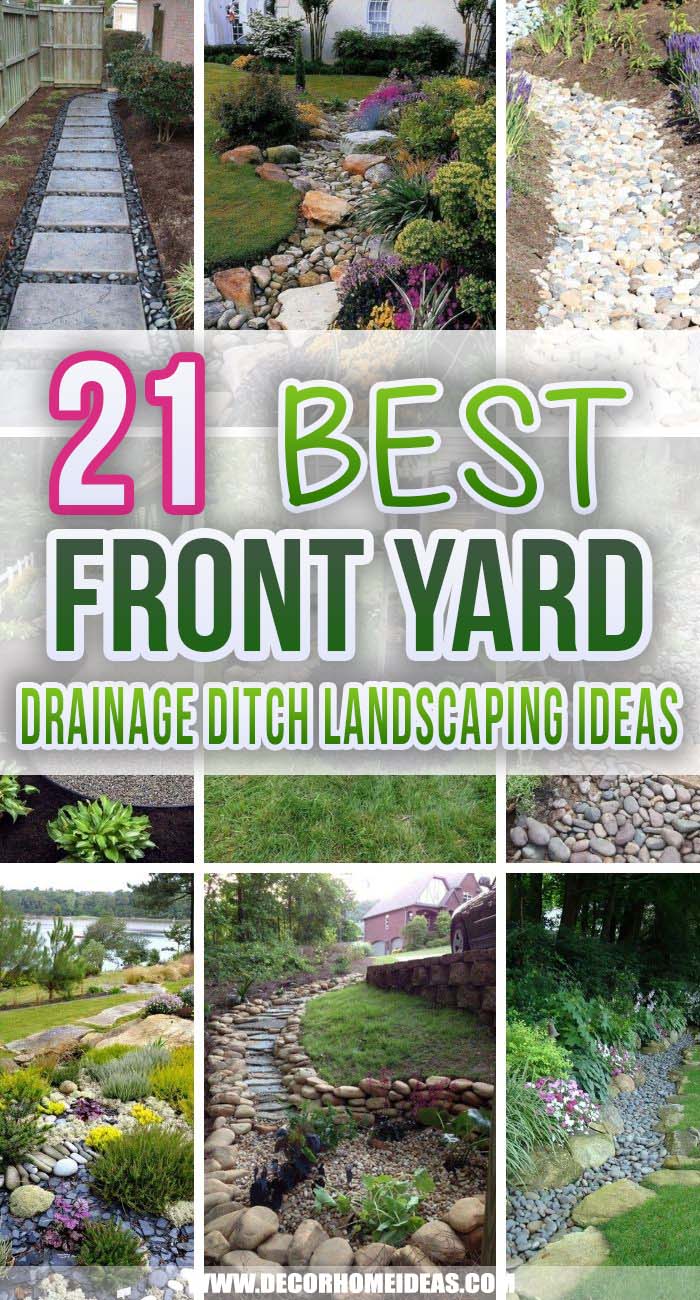
The best thing is there are some cost-efficient solutions to ditch all that rainwater without sacrificing the beauty of your front yard.
- How do you landscape around a drainage ditch?
Some quick and cheap options are to fill your ditch with rocks and pebbles, use plants to disguise the drain or use a combination of rocks and mulch.
- What can you plant near a drainage ditch?
Add shrubs and hardy flowers around the highest areas of the drainage point to prevent soil erosion.
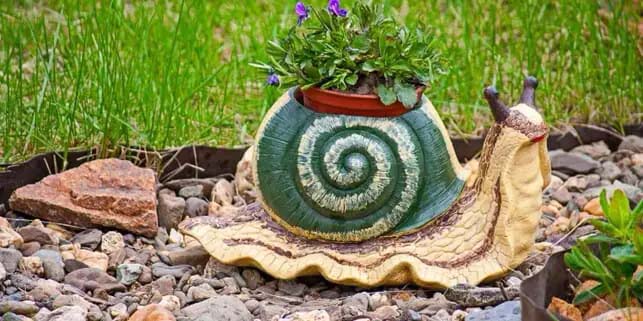
Planters of all types can create a fantasy world in your dry creek bed. Plants add color and the planters can be changed as necessary.
Choose ceramic planters as the water will quickly break down pots made of terracotta.
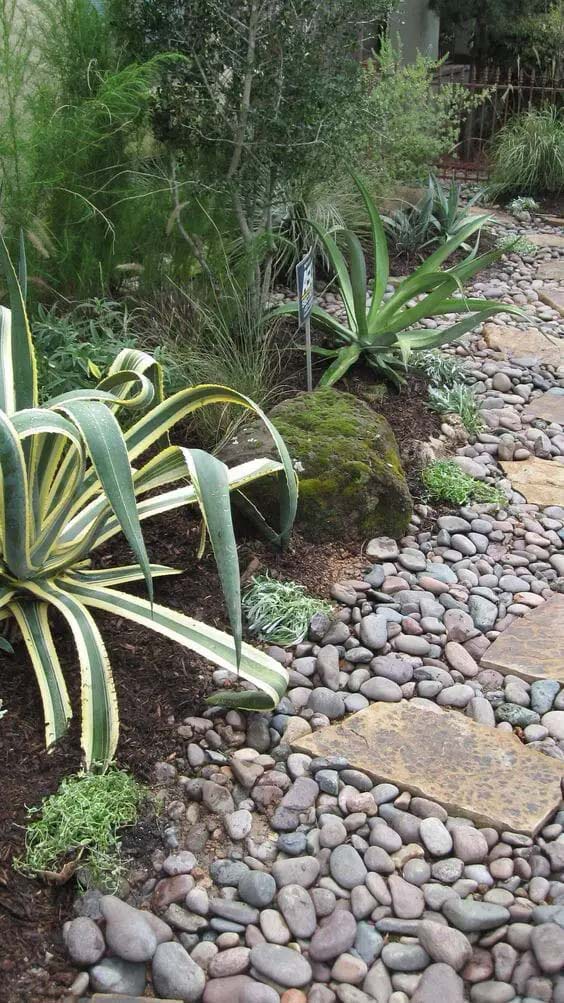
Adding stepping stones to a dry creek bed or French drain covered with river rocks can bring new life to your old ditch.
Choose natural-looking stones in a complementary color with a non-skid surface.
via Ravenscourt Landscaping
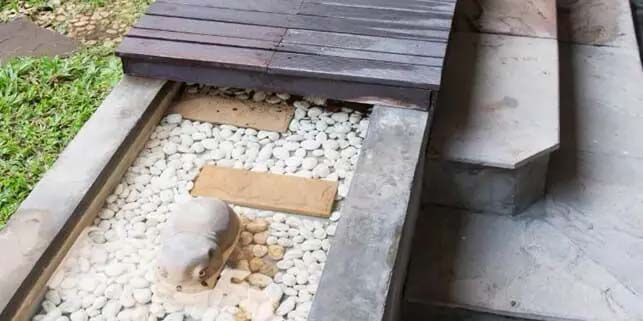
Japanese gardens can work seamlessly with a landscape drainage system. Think about symmetry, contrast, and organic materials like bamboo.
A footbridge, black lava rocks, white marble, and bamboo water spout can be used to get the look. Sculptures such as meditation temples and carved animals are also important elements.
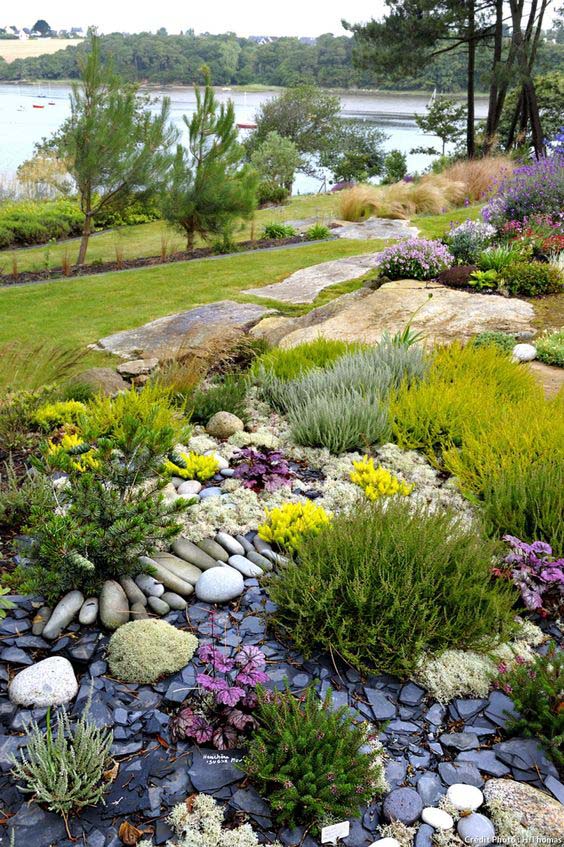
A swale channels water like a trench drain, but the water is used by plants and flowers along the path. It’s often decorated with river rocks and boulders.
This is a good solution when you can’t easily direct the water off of your property without creating a nuisance for a neighbor or public property.
via Detente Jardin
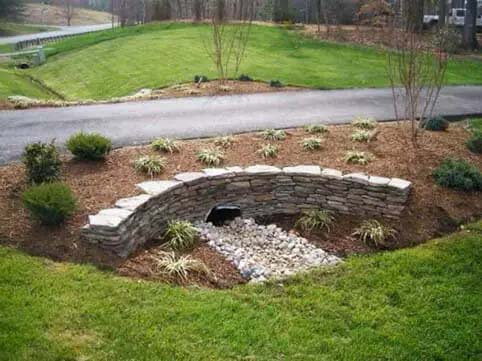
Drainage ditches that lead underneath roads can be compromised by the amount of water being redirected.
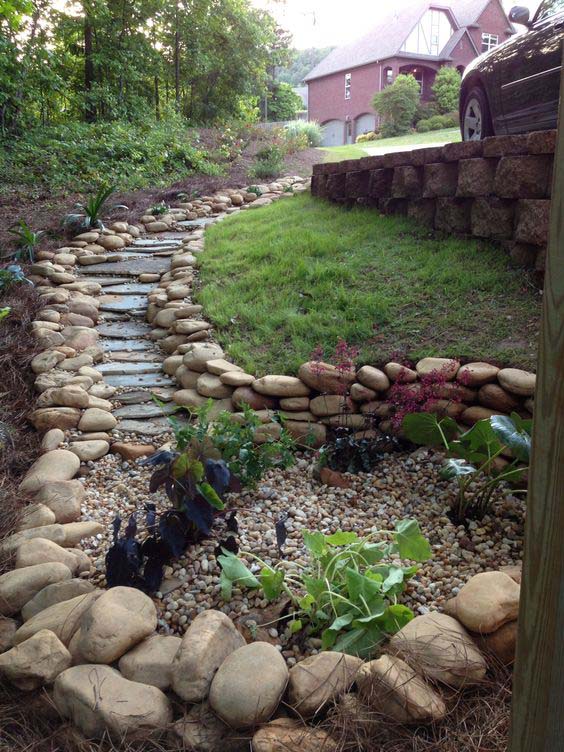
Using gravel for a ditch on a steep hill is impractical as the gravel will gradually be pushed down to the bottom.
A better solution is using natural pavers and flagstone as steps.
Here, the stones are also used as part of a retaining wall. Water-loving plants decorate the base covered with pea gravel.
A dry well can be included at the base for more control over water drainage. Think of a dry well as a leaky bucket. It holds the water and slowly releases it into the soil.
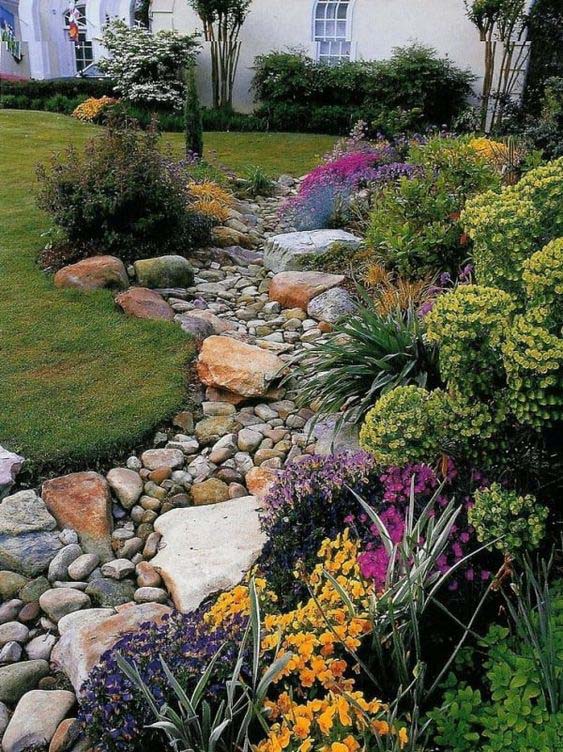
In the long run, it’s cheaper to go with the flow. The slopes in this yard indicate that most of the rainwater collects in one area.
Adding a creek bed allowed the water runoff to be used for a colorful garden similar to a swale.
This channel was dug below the level of the grass, which encourages the water to drain away from the property.
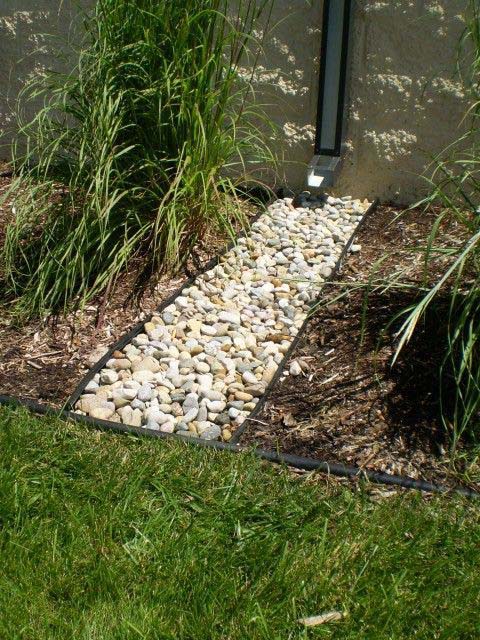
You don’t have to let a downspout flood your garden bed. Rocks provide better drainage than mulch.
The solution is to dig a channel that intersects the bed and fill it with medium-sized rocks.
The edging used here is plastic and is the best choice when you want to redirect water.
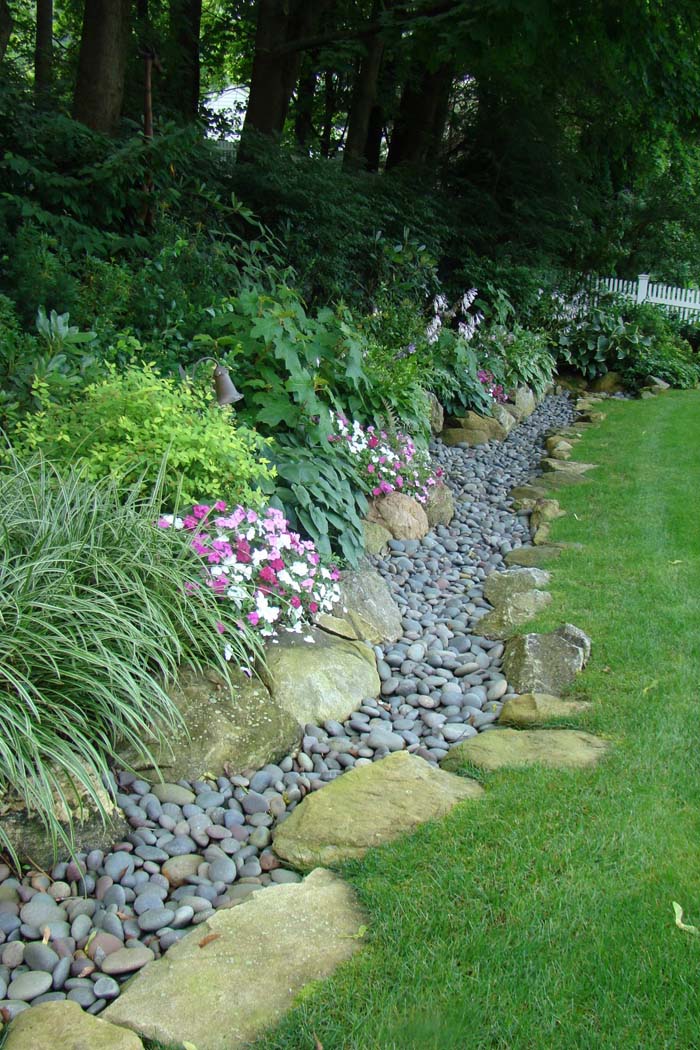
The hill next to this yard dropped a lot of runoff after rains, making it nearly impossible to keep the lawn looking neat.
Adding this dry creek bed below the grade of the grass solves all the problems. The river rocks in the ditch create an aesthetically pleasing place for water to collect.
The large rocks keep water from pooling in the grass and prevent erosion on the hill.
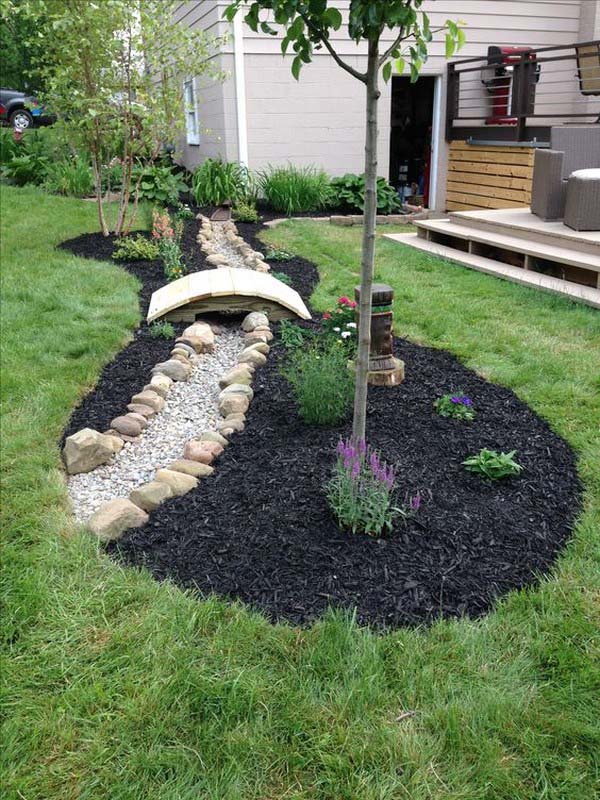
Instead of hiding a downspout, use it as a feature in your garden. This drainage ditch was made by framing it with medium-sized rocks and filling it with gravel.
It runs through a garden bed decorated with water-loving plants. Trees also use a lot of water and will consume much of the runoff.
The footbridge and decorative lamp can be found at most garden centers.
By changing the stones to bricks and adding edging, you can make this idea as casual or formal as you like. Adding a lining to the garden area will also help hold the water to this area.
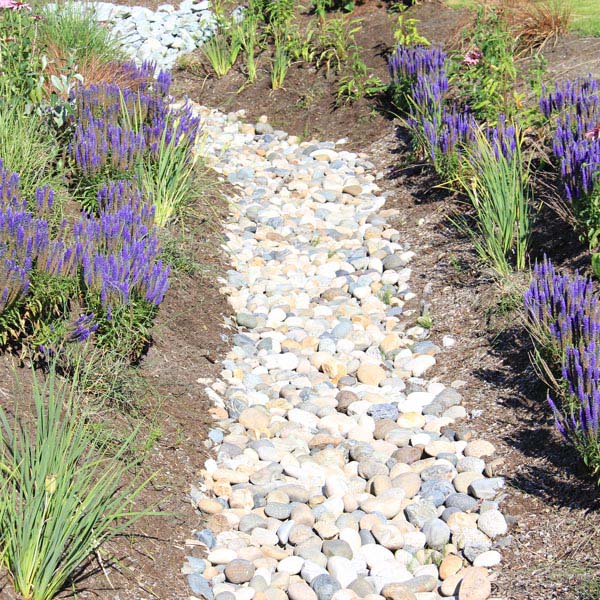
Adding river rocks to make a ditch look similar to a dry creek bed is one of the most affordable ways to landscape your ditch. Bring in eye-catching colors by adding native grasses and plants along the banks.
Your local garden center and home improvement stores carry tons of stone for this purpose. Choose from basic bedding, smooth river rocks, white marble rocks, and multi-colored quartz. You’re only limited by your budget.
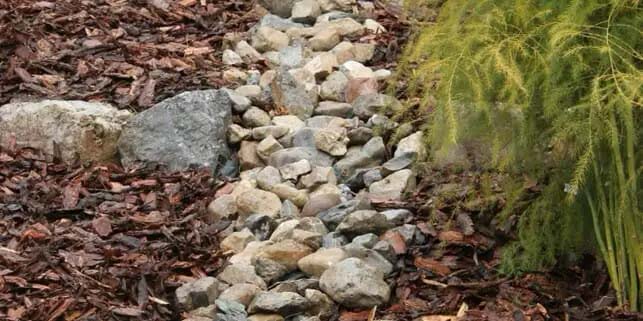
It can be tricky to find a balance between hiding a drainage ditch and actually losing it.
Mulch surrounds this French drain. The large rocks indicate where the drain is, but do so in a natural way.
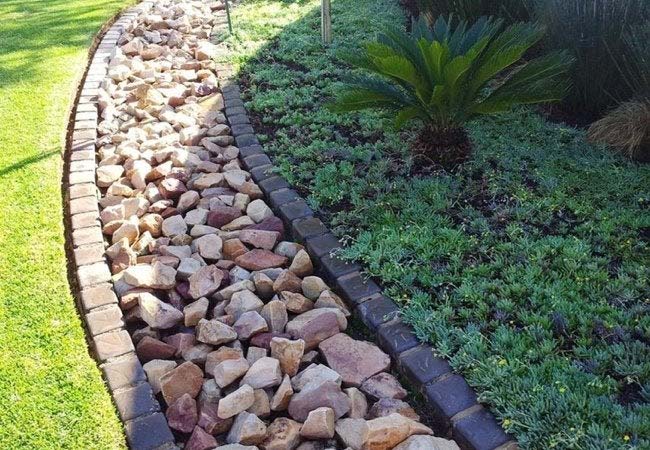
If you have a ditch or your yard has a lot of standing water after it rains, a French drain is a great solution for getting rid of that water.
Building a French drain includes digging a graded trench and lining it with a filter cloth.
The channel is filled with pea gravel that surrounds a permeable drain pipe. It’s topped with filter cloth and river stones.
via Helet Van Blerk
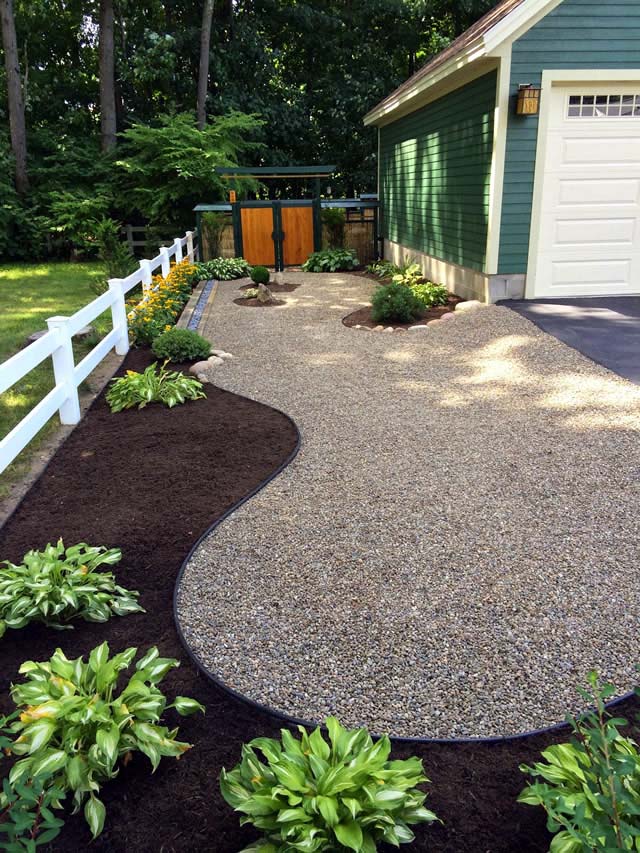
Rain runoff from the driveway would make the slope on this side of the home nearly impossible to landscape using conventional techniques.
Instead, they used pea gravel to force the water to travel to the back of the home. A French drain finishes the work, leading the water behind the property.
Water-loving calla lilies are planted in the dark mulch around the perimeter.
via Fine Gardening
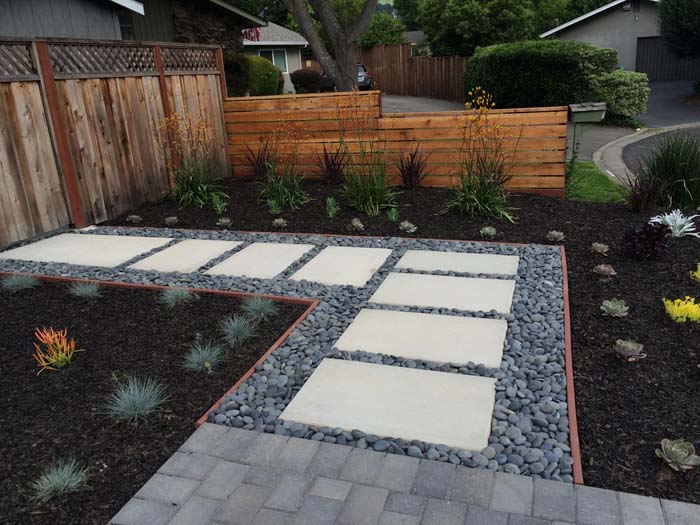
Use this idea when you need to create a walkway where water collects during or after rainstorms. The rain on the steps is minimized by the surrounding gravel, which acts as fast-acting drainage.
Create a path at least two inches deep and cover it with a weed barrier. Drop in smooth medium-sized rocks. Add pavers on the top. The pavers should be made with an anti-slip surface and be weather resistant.
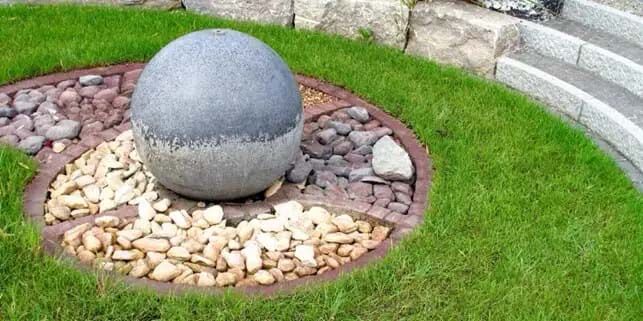
Water features make the best of a soggy situation. It controls the path of the runoff and if there’s a significant amount of water flowing through it, can be the perfect spot for a fountain.
This water feature was made from materials found at your home improvement store. The edging is made from red brick that’s been cut to size. The rocks are separated by color. The ball is a fountain. Add a pump while building it out and you’re good to go.
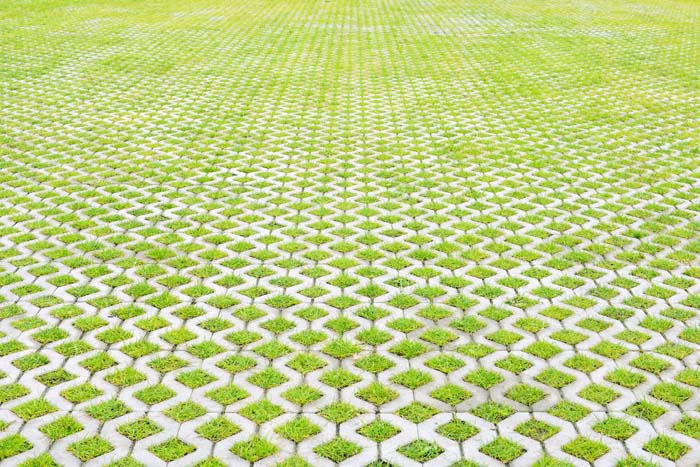
Permeable pavers are a favored solution by landscapers and contractors.
Consider this option for a level driveway that floods during every rainstorm.
These pavers allow water to drain off into the soil underneath instead of pooling in on the cement or asphalt.
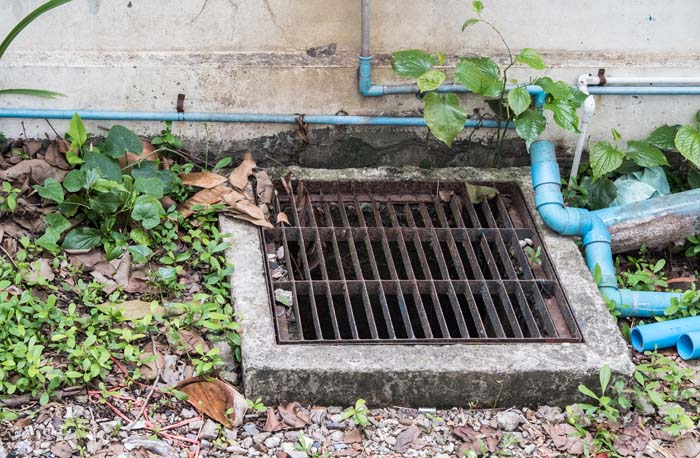
Commercial grates come as simple covers or as channel trenches.
This is a great solution if your driveway or path has poor drainage due to it being level with the yard.
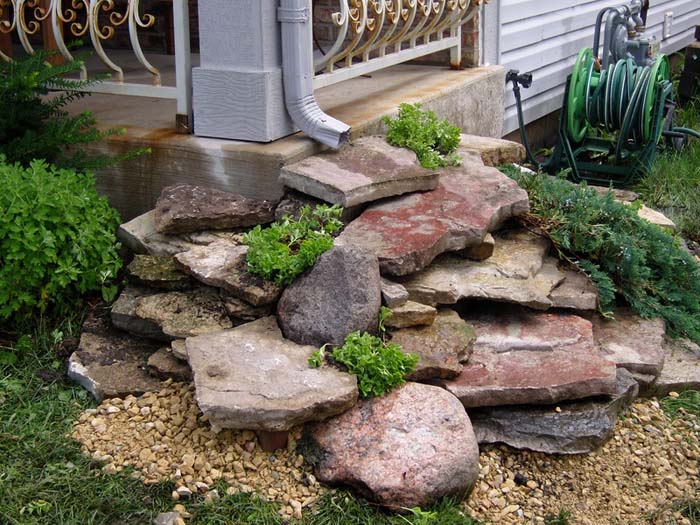
Every homeowner has to deal with storm water from a downspout. If the downspout is elevated, add flagstone underneath and create a water feature.
This fountain was built with layers of flagstone, dirt to level the layers, and large rocks to secure the stones in place. The water ends in the crushed gravel.
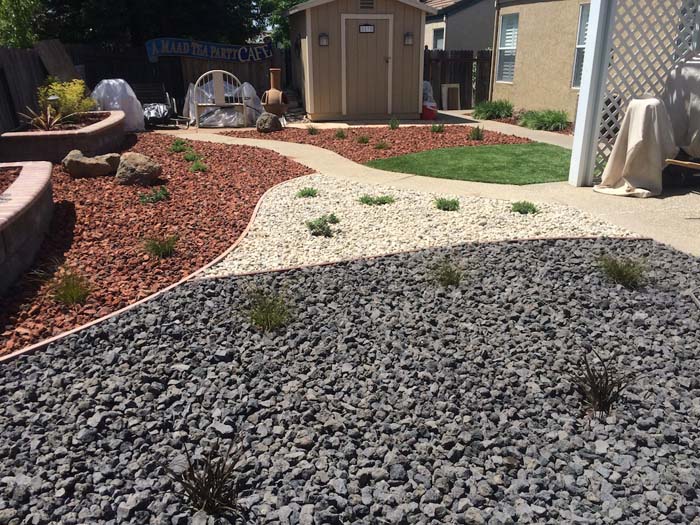
Rock gardens aren’t exclusively for hot, dry climates. You can create a rock garden in any area.
If you have problems with storm water collecting in your yard after it rains, this is a good option.
via Turf Doctor
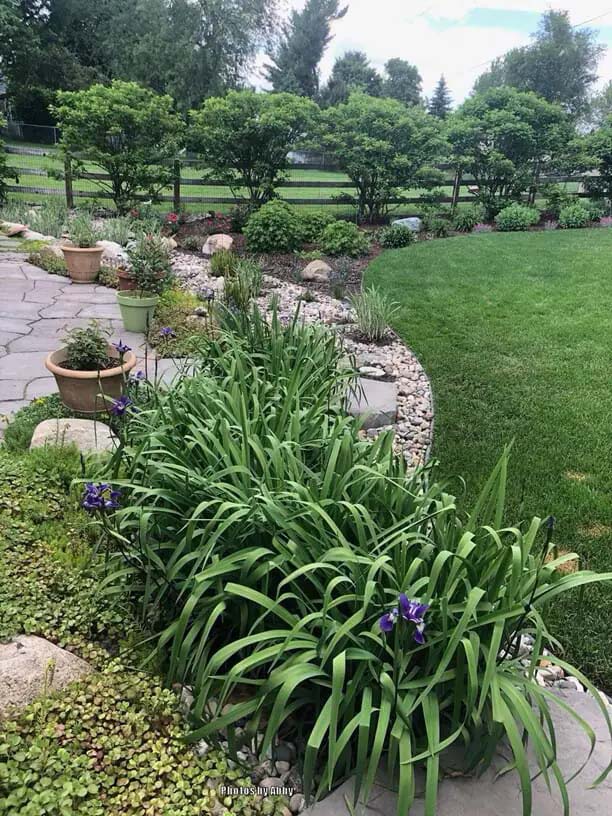
Fill your drain with rocks and add plants that require a lot of water.
Plants that work well are irises, butterfly weeds, and daylilies. Cattail, bee balm, and elephant’s ears will also thrive.


